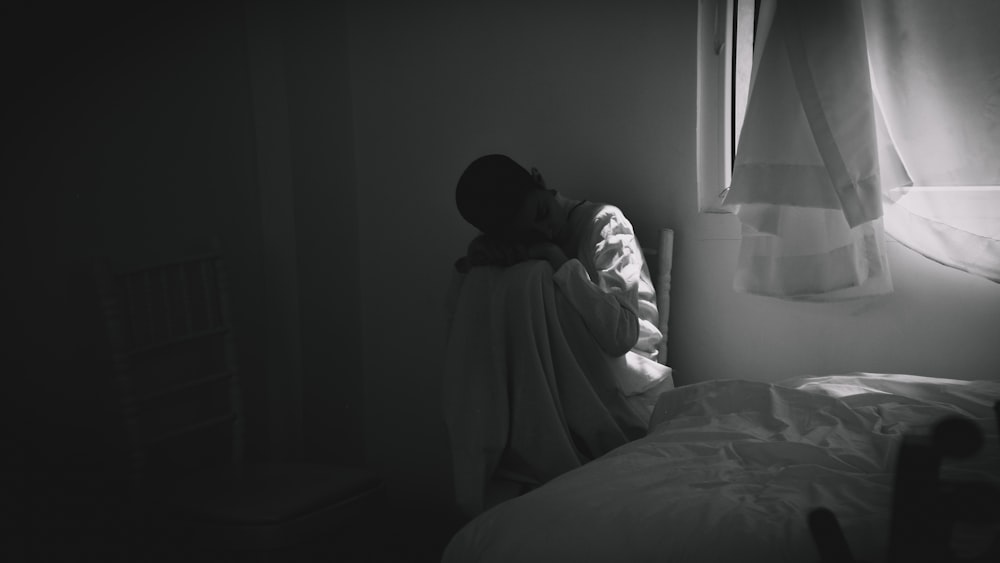Theresa had always been a bit of an anxious person, but that was part of her charm. She was the life of every party and never shied away from meeting new people. That all changed when she suddenly found herself plagued with agoraphobia – an intense fear of leaving her home.
At first, it seemed like nothing more than a mild anxiety attack. But as time went on, it became harder and harder to leave the house without having crippling panic wash over her body. It wasn’t long before Theresa stopped going out altogether. Instead, she found herself opting to stay inside where she felt safe and secure.
She found solace in smoking cigarettes and weed while watching movies and playing games on the internet – activities which kept her entertained throughout the day without ever needing to leave her house or having to interact with other people directly. Her cats provided love (and fur) during those lonely days and Theresa couldn’t help but appreciate their loyalty in times when nobody else understood what she was going through.
It’s been years since Theresa has left the safety of her own four walls, she told me. “And yes there are the constant reminders of what it’s like to be normal. I still yearn for the freedom from what sometimes feels like prison walls, trapping me inside every day.”
What is Agoraphobia?
Agoraphobia is an anxiety disorder that is characterized by a fear of situations in which escape might be difficult or help unavailable in the event of a panic attack or other crisis. People like Theresa often avoid public places, such as crowded stores or theaters, or they may confine themselves to a single “safe” location, such as their home. In severe cases, agoraphobia can make going outside impossible.
Agoraphobia often develops in response to having one or more panic attacks. A panic attack is a period of intense fear or discomfort that comes on suddenly and peaks within minutes. During a panic attack, you may experience physical symptoms such as a rapid heart rate, chest pain, shortness of breath, dizziness, or nausea. The feeling of being out of control or going crazy can be terrifying. As a result, you may start to avoid situations that remind you of the attack or where you don’t feel safe.
For example, let’s say you have a panic attack while riding the bus to work. After that experience, you may start to avoid taking the bus and instead drive your car to work even though it takes longer and costs more money. Or, let’s say you have a panic attack while grocery shopping. As a result, you may stop going to the grocery store and instead have your groceries delivered even though it’s less convenient. Over time, these avoidance behaviors can lead to agoraphobia.
PTSD
Agoraphobia can also develop in response to witnessing a traumatic event, such as a natural disaster or terrorist attack. This is known as post-traumatic stress disorder (PTSD). PTSD can cause symptoms of anxiety and make it difficult to go about your daily life without feeling overwhelmed by fears of another catastrophe happening.
Symptoms of Agoraphobia
People with agoraphobia often experience anticipatory anxiety—the fear of having a panic attack or other crisis in a situation from which escape would be difficult or help unavailable. As a result, they may start avoiding situations that make them feel anxious.
Other common symptoms of agoraphobia include:
- Heart palpitations
- Sweating
- Trembling
- Shortness of breath
- Feeling dizzy or lightheaded
- Nausea
- Feelings of unreality (derealization) or being detached from oneself (depersonalization)
- Fear of losing control or going crazy
Personality Traits
People with certain personality traits may also be at increased risk for developing agoraphobia. These traits include being shy, anxious, or having low self-esteem. Women are also more likely than men to develop agoraphobia.
Agoraphobia is treated with medication and therapy. Medications used to treat agoraphobia include antidepressants and anti-anxiety medications. Therapy for agoraphobia typically focuses on exposure therapy and cognitive behavioral therapy (CBT).
Exposure therapy involves gradually exposing the person to the situations they’re afraid of in a safe and controlled environment. CBT helps people identify and change negative thinking patterns that contribute to anxiety and fearfulness.
Agoraphobia is different from a fear of crowds (claustrophobia) or a fear of open spaces (agoraphobia). People with agoraphobia may have one or both of these fears. Agoraphobia is also different from social anxiety disorder, although people with social anxiety may also avoid public places.
Agoraphobia usually starts during adolescence or young adulthood, but it can happen at any age. It’s more common in women than men and often runs in families.
What Causes Agoraphobia?
The exact cause of agoraphobia is unknown, but it’s thought to be a combination of genetic and environmental factors. People with agoraphobia often have a family history of anxiety disorders or other mental health conditions. They may also have experienced traumatic events, such as sexual assault or natural disasters.
Conclusion
If you have agoraphobia, you’re not alone—it’s estimated that about 1.3 percent of American adults have lived with this condition at some point in their lives. And while it can be disabling, there is hope. With proper diagnosis and treatment, most people with agoraphobia can learn to manage their symptoms and live full lives again.
If you feel that you or a person you love is experiencing agoraphobia, please reach out to Sunflower Counseling today: (406) 214-3810.
John Michaels is a local Missoula author who graduated from Brown University in creative writing. In between raising kids, he spends his time meandering around downtown Missoula – writing screenplays, playing music, and working at Sunflower Counseling, MT.



